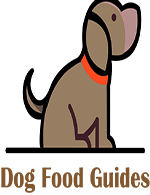This post may contain affiliate links. If you use these links to buy something we may earn a small commission. Thanks.
What Human Food Can I Feed My Diabetic Dog?
Diabetes is one of the diseases common in both humans and animals. In America alone, the chronic disease is living in over 26 million people while in pets dogs are the most affected. Canines living with diabetes today have increased by 32% since 2011. This escalation comes despite the disease’s awareness campaign in November.
Although many people take it lightly, once a dog is stated diabetic it remains with the disease throughout. But that doesn’t mean your lovely pet has no future. With proper treatment and care, a diabetic dog can live many years just like a non-diabetic dog. As the caretaker, you have to ensure your Pug or Beagle is having a balanced diet and proper exercises. This now brings me to the question a lot of people have been asking… In this way, the vegetable is another way to control diabetic for any dog and cat. Read more for many other options.
Is it a must I go for the food from the store or what human food can I feed my diabetic dog?
While there is someone who might find it awkward, this is a great question to consider. Most of the dog food from stores is from animal feed grade ingredients, which usually contains only 6-10% moisture. All animals are not the same and you may find your dog less attracted to the dry food. At this point, you’ll have no other alternative but look for something palatable to your animal, such as boiled chicken.
Before we dive deeper into these human foods you can give your diabetic dog, let’s have a brief review of the disease then its management.
What Is Canine Diabetes And How Does It Relate With Feeding?
By simple definition, Diabetes is a chronic disease which occurs when your dog either doesn’t create enough insulin or doesn’t produce it at all. The health condition can also occur when your dog’s body is not responding to insulin accordingly. Just as in humans, the canines create insulin using the pancreas.
The prime role of the hormone is to maintain the blood sugar levels, which in turn helps the body convert food into fuel. So, the main focus on every diabetic dog is to keep the levels of the blood sugar (also called glucose) closer to normal as possible.
Causes
Your dog can get diabetes due to various reasons, including lack of exercise, poor diet, some diseases, improper medication, and even genetic traits. Middle-aged and senior dogs are also at high risk of the disease.
If not handled on time, diabetes can lead to more perilous disorders like Cushion’s disease, liver hepatic, and low thyroid function disease. These diseases then make it difficult to subject diabetes
treatment, lowering the survival expectancy of your sweet pooch. To avoid the fateful ordeal, monitor your dog closely and if you notice any of the following signs, visit your veterinarian as soon as possible.
The early sign and symptoms of diabetes in dogs include:
- Excessive drinking/ thirst
- Increased urination
- Weight loss
- Increased appetite
If undiagnosed and controlled on time, the diabetic dog will display advanced symptoms like:
- Cataracts- involves clouding of the eye’s lens, which then causes decreased vision.
- Diarrhea, and or vomiting
- Lethargy- the dog is fatigued and sleepy all the time
- Diabetes ketoacidosis, which can cause abnormal breathing and general weakness
- Anorexia- the dog experiences extreme weight loss due to lack of eating)
- Dull, oily hair coat
Once the vet affirms the dog to have diabetes, she will prescribe special treatment to help control blood sugar levels and prevent further complications. For the medicinal treatment, the vet will recommend the insulin shot that you will be giving your diabetic dog. For the feeding, on the other hand, she will structure the diabetic diet to keep your sick pet in shape.
What Human Food Can I Feed My Diabetic Dog?
Before we discuss the food to give your dog with diabetes, you have to know the disease doesn’t do well with overweight. If your German Shepherd or Pug already has some extra pounds, he has to lose some to help his cells use the insulin properly.
You also have to make sure you give the dog the right amount of calories and at the right time. Once you know the exact calories to provide, you now go for the best food, which you can get the ready-made commercial food or home-made.
While most of the diabetic pets have been relying on the former, other pets, however, despise dry food. This is where you now create your homemade pet meal, bringing us to our last point of discussion: What human food can I feed my diabetic dog?
While the ideal diet for diabetic dogs remains unclear even today, veterinarians mostly recommend low-fat, medium-carbohydrate, medium-protein, and high-fiber. The amount of fiber and carbs, however, will rely on factors like weight and how active your dog is. Whatsoever, the following are the foods that you can feed your dog with diabetes without affecting the functionality of the insulin shot in any way:
Protein
High-quality proteins are very essential when managing diabetes in your dog. Meat sources like lamb and beef have the L-Carnitine amino acid which can help enhance fat metabolism and assist in maintaining lean body mass. Other great sources of proteins for a diabetic canine include chicken, fish, and turkey.
Since we’re trying to avoid body fat from adding up, aim for the low-fat foods like lean red meats or chicken breast.
Carbohydrates
When it comes to carbs, you truly have to be careful not to cause a blood sugar spike in your dog. The body usually digests carbs faster than proteins or fats. As you choose the right meal for your pet, you have to avoid simple carbs which are characterized by high glycemic index (GI). High GI food can make the glucose spike very fast, therefore you should stick with wholesome or low GI carb. Some of these foods include whole grains, legumes, brown rice, potatoes, and honey.
Some of the high-glycemic food that you ought to avoid include, white bread, white rice, etc.
Fiber
As of now, fiber has come to prove to be the best meal in a dog living with diabetes. The food helps a lot in digestion and also slows down the emptying of gastric and the digestion of carbs. This, in turn, minimizes the release of glucose and prevent the blood sugar levels from spiking.
Some of the best fiber human fiber foods that you can use to control diabetes in your dog include spinach, broccoli, and cauliflower. Also, fruits like blueberries, raspberries, and pears can be used but in small portions, since they contain high natural sugars.
Fats
As I have suggested earlier, a dog with diabetes requires a low-fat diet to ensure optimal functioning of the insulin. Foods that are rich in omega-3 fatty acids can assist a lot in decreasing blood lipid levels and even regulation of the immune system. So far, fish and fish oils are the best in this role.
Point to note:
When it comes to feeding your diabetic dog, timing is everything. Avoid free-feeding your dog and don’t give him a larger or smaller meal. Always keep it proportional as the insulin dose is aimed at meals of similar size.
What next?
At first, caring for a dog with diabetes might seem pretty hard and expensive. Once you realize you can provide your precious pet with human food, nevertheless, it becomes normal and a part of your everyday life. However, to ensure the medication and the meals are fruitful, give your pooch regular exercise, which will help maintain the lean body.
Just as with the feeding, the exercise has to be the same length and same intensity every time. This will help in balancing the blood sugar levels without either overdoing or under-doing it. Some of the exercises that you can give to your dog include walking, swimming, and jogging.




